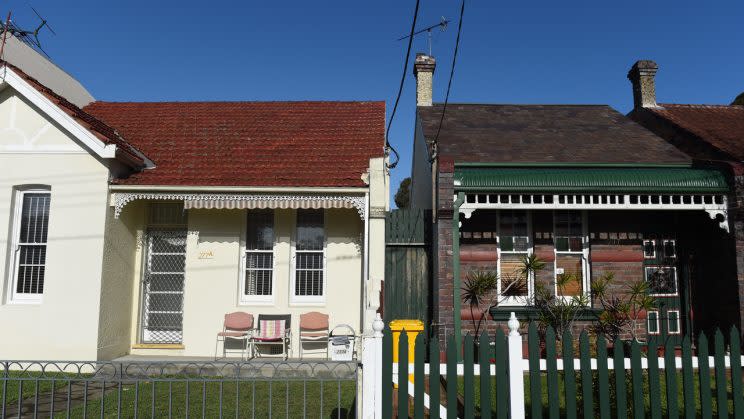How high can interest rates go this year, realistically?

Anyone who owns a home, or is looking to buy one, will know the pain of having to factor in mortgage repayments to a tight budget.
If you’re anything like me, you drawer up the spreadsheet, put in your list of expenses, add your income, and hope that the balance is in the black.
You’ll also known then that your interest payments on a mortgage rise and fall, as interest rates rise and fall. What’s a little scary at the moment is that interest rates are at record lows, so when you’re doing your budget, you have to assume the cost of your mortgage will only rise over time (as interest rates rise).
So, how high can interest rates go this year, realistically?
Also read: ‘I have a solution to our property price problem’
The Reserve Bank
To answer that question we really have to go to the genesis of most interest rates increases – the Reserve Bank (RBA).
The RBA has kept interest rates at the record low level of 1.5 per cent now for seven months. It’s also showing no signs of raising rates any time soon. The last paragraph of the statement accompanying the March decision read:
“…holding the stance of policy unchanged at this meeting would be consistent with sustainable growth in the economy and achieving the inflation target over time.”
So, if interest rates, more broadly speaking, were determined exclusively by the Reserve Bank, you could safely assume that interest rates weren’t going to rise this year. As far as the official cash rate in concerned, I suspect that’s actually true. In fact the chief economist of the NAB, Alan Oster, recently told me that there could yet be another cut in the Reserve Bank’s financial weaponry… believe it or not.
Also read: Trump can’t take credit for post-election stock market rally
Commercial Banks
Still, in this inter-connected global economy that we live in, the commercial banks rely far more heavily on international, or wholesale, money markets to source funds for loans to mums and dads around Australia.
The thing is that these wholesale money markets are more expensive (interest rates are higher). That’s especially the case for the United States (where many of our banks source funds).
What’s changed over the past 12 months is that the RBA’s counterpart in the US, the Federal Reserve, has started to lift the Fed Funds Rate (the equivalent of our official cash rate). That has raised short-term interest rates in America, and, naturally, has also trickled down to affect longer-term debt as well. It just so happens that Australia’s commercial banks are quite fond of American longer-term debt (especially to fund fixed-rate loans). As such, the costs for our commercial banks are rising, so they’re raising rates.
Big four
Australia’s big four banks are now pushing up the interest rates on their standard variable loans to residential home owners higher, and investors.
Westpac has raised its standard variable mortgage rate for owner-occupiers by 0.03 percentage points to 5.32 per cent for those who are making principal and interest repayments.
Meanwhile the NAB announced its standard variable mortgage rate for owner-occupiers has increased by 7 basis points to 5.32 per cent per annum. NAB said someone with a $300,000 loan on a 30-year term would be paying an extra $13 a month as a result of this rate increase.
Now bank analyst, Brett Le Mesurier, from Velocity Trade, raised an interesting point with me recently. He said that banks’ standard variable loans are usually dictated by Reserve Bank interest rate decisions, while fixed rates are controlled by movements in the interest rates on wholesale markets. NAB stated in its PR release, however, that the reason why the variable rate moved was higher wholesale funding costs. To one banking analyst at least, that didn’t make sense.
And finally, the Commonwealth Bank, ANZ and St George joined NAB and Westpac late last week in another out-of-cycle increase in mortgage rates for investment and owner-occupier loans.
Economy can’t take it
Another consideration in all of this of course is whether the economy could actually cope with higher interest rates.
Given the Reserve Bank’s reluctance to tighten policy (based on low inflation and rising unemployment), I suspect means policy makers believe higher interest rates are the last thing this economy needs.
Interest rates may move up a bit… but that’s it
Commercial interest rates will move higher this year, but if recent rate rises are anything to go by, I gather those moves will be small… very small. In total, I can see commercial banks raising their rates for owner-occupiers by close to 25 basis points or 0.25 per cent this year. Investor rate increases will will likely be higher than that, if they aren’t already
Remember too that as rates rise, and the economy slows, the banks suffer. The banks will want to claw back some margin, but will make absolutely sure their rate rises are unlikely to lead to too much mortgage stress. Anything else doesn’t really make sense.
You can follow David @DavidTaylorABC

 Yahoo Finance
Yahoo Finance 
